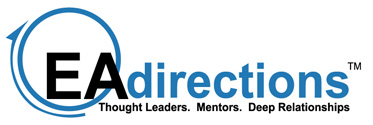EA has always been a polarizing phenomenon and remains so today. The diversity of opinions on exactly what EA is and how to approach it continues. While there are many variations, two opposing camps dominate.
- The architecture-driven camp focuses on creation of the various “architectures” (solution, application, technical, project, business, SOA, Cloud, etc.), usually as implemented in projects.
- The enterprise-coordinated camp focuses on the “enterprise” with emphasis on strategic alignment, transformation roadmaps, and other holistic portfolio perspectives.
The best EA programs include both approaches, with the enterprise-coordinated perspective providing context for the various “architectures”. That way it ensures that efforts to “get things done” (i.e. projects) are implemented with all of the larger and longer-term goals in mind; to consistently manage complexity, improve integration, increase agility, balance cost and risk, or achieve whatever future-oriented, holistic objectives the leadership team deems important. Too often, though, one camp dominates to the exclusion of the other, causing an imbalance. The divide between the architecture-driven and enterprise-coordinated camps should not exist, yet it does! Several factors conspire to amplify the divide, not the least of which is the economy.
I have rarely found an organization that couldn’t benefit from EA – from very small to very large, in every industry, in the private and public sectors and in not-for-profits. Everybody can do it, adopting the “core concepts” of EA in order to enhance decision-making to include an enterprise perspective. Implement just enough mechanisms to create processes and deliverables that align strategy with implementation across the continuum from the short to the long term, always sensitive to the balancing act described above. Drive your program with an enterprise-coordinated approach. You don’t need to call it “EA”, nor do you need to completely implement any particular framework or methodology. Good, or even just “better”, will come over time.
Directions: A solid EA leader always adjusts his/her approach with the times, with sensitivity to the biases and needs of their enterprise. Make sure you are focused, delivering value and addressing the needs of leadership. Don’t get caught up in perfectionism, avoid the extremes, and take a balance approach. And don’t forget to be leaders yourselves – provide enterprise perspective and context so that decisions are consistent with both short term needs and longer term visions. If you make your EA program more transparent and actionable, while focusing on the right balance, you will make a difference for your enterprise.
